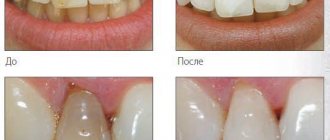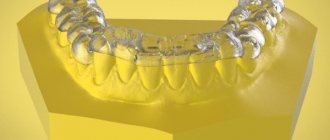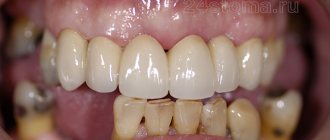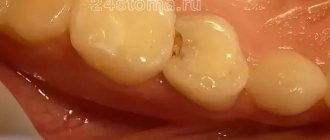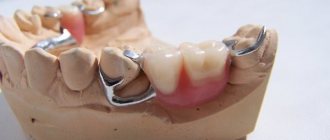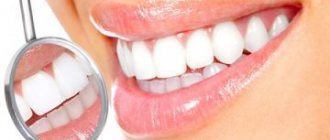Why do you need teeth scaling?
This procedure involves professional cleaning of the oral cavity from plaque and tartar. But it is deeper than the usual one, which is preferably carried out twice a year. Its importance is particularly emphasized in dentistry and periodontology, since the consequences of such deposits significantly affect the condition of hard and soft tissues.
If plaque from food and drinks can be easily removed with a toothbrush and toothpaste during daily hygiene procedures, then the stone cannot be removed in this way. Scaling is carried out for the treatment of gingivitis, periodontitis, periodontal disease, as well as for the prevention of other pathologies of soft and hard tissues.
What about the price?
The cost of the procedure may vary in different clinics and regions, but on average it ranges from 6 thousand rubles. Compared to the treatment of cavities, gingivitis, periodontitis and other diseases, this is a fairly reasonable price.
If you are wondering whether it is worth paying such a sum for cleaning surfaces from tartar, decide what is better - to constantly visit the dentist and suffer from painful procedures during treatment, or to carry out such treatment and forget about any signs of disease for a long period.
Difference from regular cleaning
Let us describe the fundamental differences from the preventive procedure:
- Twice a year you need to clean plaque from the surface of your teeth. This is a simple manipulation that removes only soft and partially hard deposits. It is recommended for all people to do it regularly. Oral scaling is prescribed only for special indications as a therapeutic procedure.
- If tartar forms in periodontal pockets, it is impossible to get there using conventional instruments. In this case, the only way out is scaling.
- This procedure turns out to be longer, but also effective.
- Only a hygienist with experience and skills can perform dental treatment.
Helps keep teeth beautiful and healthy
Scaling not only helps make your smile beautiful, but also keeps your teeth healthy.
After all, even daily brushing of teeth does not protect the oral cavity from all possible dental diseases. The smallest particles of food can accumulate in tooth spaces that are inaccessible to a toothbrush. Together with coffee, tea, tobacco, and alcohol, they contribute to the formation of plaque. And it, in turn, is converted into tartar.
This course of circumstances inevitably leads to a host of unpleasant gum diseases, which can lead to tooth loss. There is no need to talk about the aesthetic appearance of a smile here - plaque makes teeth yellow and ugly.
During the process of professional teeth cleaning, called scaling, all harmful deposits are removed. This ensures a beautiful smile and healthy oral cavity.
Types of scaling
Today the main options are:
- Manual - previously this was the only way to get to deeper deposits on the teeth. For this purpose, special tools with sharp and narrow edges were used. But now dentists refuse such manipulations, as this risks gum injury and creates significant discomfort for the patient.
- Ultrasonic is a more modern scaling method when hardware is used. Due to this, it is possible to eliminate stone and plaque much better, reaching even the subgingival areas, and at the same time eliminating any injuries and pain. But for such work you need special equipment.
- Sandblasting - can be performed as a separate procedure or used as an additional impact on deposits at the end of regular scaling. Thus, it is possible to achieve maximum cleaning of surfaces and prevent the rapid formation of plaque in the future.
Fluoridation will protect against caries
Fluoride enhances protection against caries and strengthens enamel. We get it from food and water. It is also found in toothpastes and mouthwashes. But this does not provide complete protection to the teeth. The fluoride applied by the dentist is more concentrated.
How does the procedure work? Fluoridation (coating with fluoride varnish) is carried out if the teeth are completely healthy. First, the dentist thoroughly cleans their surface, then applies a drug that penetrates the enamel. The varnish is very sticky and therefore adheres well to the teeth. The doctor also covers the exposed necks and roots of the teeth with it. After varnishing, you should not eat or drink for about two hours.
What is the result? It is best to carry out fluoridation of teeth after Air Flow or removal of tartar. Then the efficiency increases and the effect is maximum. The enamel strengthens and becomes less susceptible to caries. The sensitivity of the teeth decreases - their exposed necks no longer react painfully to food.
How often to do it. Fluoridation is recommended to be carried out once every six months. With a strong tendency to caries - once every three months, but not more often.
How is ultrasonic scaling performed?
The entire session consists of simple manipulations:
- At the first stage, an ultrasonic device with vibrating attachments is used. The application of high-frequency waves destroys tartar, but the teeth remain intact and undamaged.
- Next they begin sandblasting. At the same time, a special mixture and air are supplied under high pressure, thanks to which it is possible to get rid of food residues in hard-to-reach places, remove age spots, and wash away plaque. Slight lightening is often noted after such a procedure.
- At the end, it is advisable to polish the enamel using a special composition, which will become a protective layer and prevent re-deposition of tartar in the near future.
The entire procedure is considered safe and painless, but some patients experience discomfort if they have exposed necks or increased tooth sensitivity. In this case, the doctor uses local anesthesia. The procedure helps to avoid the spread of pathogenic microorganisms throughout the oral cavity and prevent most dental diseases.
Air Flow - “Air flow”. Removing dark plaque.
Colored plaque settles on the surface of the teeth. The appearance of plaque is promoted by drinking coffee, red wine and smoking.
How does the procedure work? The dentist points the device at the plaque-covered surface of the teeth. Under high pressure, the teeth are treated with a mixture of powder (sodium bicarbonate) with air and water spray. The powder removes plaque, bacteria and dental plaque even in hard-to-reach places where other tools cannot penetrate.
What is the result? The procedure returns the teeth to their natural color. They become light and shiny. For 2-3 hours after cleaning your teeth using the Air Flow method, you should not smoke, drink tea, coffee or eat foods that can stain your teeth.
How often to do it. It is recommended to carry out this treatment twice a year. Before doing the procedure, consult with your doctor: for some periodontal diseases, other methods of removing dental plaque are preferable.
Sandblasting polishing
Often, after scaling, dentists perform sandblasting – a procedure that is safe for the enamel. It is done simply - a stream of water with abrasive particles, usually soda, is applied to the teeth under high pressure. This completely removes remaining plaque and tartar, and also further polishes the teeth, slowing down the settling of harmful bacteria on them.
Sometimes after scaling, teeth are coated with fluoride varnish to prevent caries.
You can clearly see how polishing and ultrasonic cleaning takes place in this short video:
About ultrasound exposure
As mentioned above, ultrasonic scaling is a more modern, effective and safe option for cleaning teeth from plaque and tartar. Under the influence of ultrasonic vibrations, solid deposit structures are literally destroyed and immediately washed away with a water jet. The technology allows the procedure to be carried out completely painlessly for the patient, and without the risk of injury to mucous tissues.
Today, ultrasonic scaling is often carried out in combination with sandblasting using an Air Flow device. After exposure to ultrasound, the doctor treats the enamel and cervical area with an air-water jet containing abrasive particles, and, if necessary, smoothes the root surface in the same way. Thus, he removes the remaining small particles of deposits and carries out additional polishing to protect the fabrics from the rapid formation of new plaque and tartar.
Using an ultrasound machine, a specialist cleans periodontal pockets
Differences from regular cleaning
- Routine cleaning is a preventative procedure that is recommended to be done every six months to a year, regardless of the condition of the oral cavity. Scaling is done when there are serious problems and the presence of a large amount of plaque and stone
- If there are periodontal pockets, regular cleaning may not help - removing plaque from them and polishing the roots of the teeth can only be done with scaling
- Scaling takes longer than regular cleaning
- To perform scaling, the dentist must be a professional hygienist and have special skills
In what cases is scaling prescribed - indications
The procedure is prescribed in the presence of abundant dental plaque in the subgingival area. In some cases, scaling becomes a mandatory part of the preparatory process for other dental procedures:
- splinting teeth for periodontitis and periodontal disease,
- prosthetics,
- installation of fixed orthodontic systems – braces,
- professional whitening,
- dental implantation1.
The procedure is carried out before splinting
“I went through scaling several times. I have sluggish periodontitis, I have to often visit the dentist, undergo medical examinations and cleanings, open curettage was also done, but now there is no such need for it. In short, the procedure is normal, under anesthesia you don’t feel anything. Moreover, they do this with a special ultrasonic device; they won’t scrape anything with instruments. So don't worry."
Anna_VS, from correspondence on the woman.ru forum
With the development of periodontitis and periodontal disease, scaling is a mandatory procedure that is part of the comprehensive treatment of pathology. These diseases lead to the formation of voluminous periodontal pockets. Plaque accumulates in them, which then turns into hard deposits. Treatment of periodontal disease necessarily involves regular cleaning of the subgingival area.
Manual cleaning
Previously, the only option for scaling was manual cleaning. Deposits from teeth and periodontal pockets were removed manually using special instruments with sharp tips. Now this method is still practiced, but it is considered outdated because it takes a lot of time and is not very effective. Even manual cleaning has a high risk of injuring your gums. Therefore, dentists prefer more modern methods.
Manual cleaning tool
Sources
- https://infozuby.ru/skeyling-zubov.html
- https://www.32top.ru/stat/2318/


